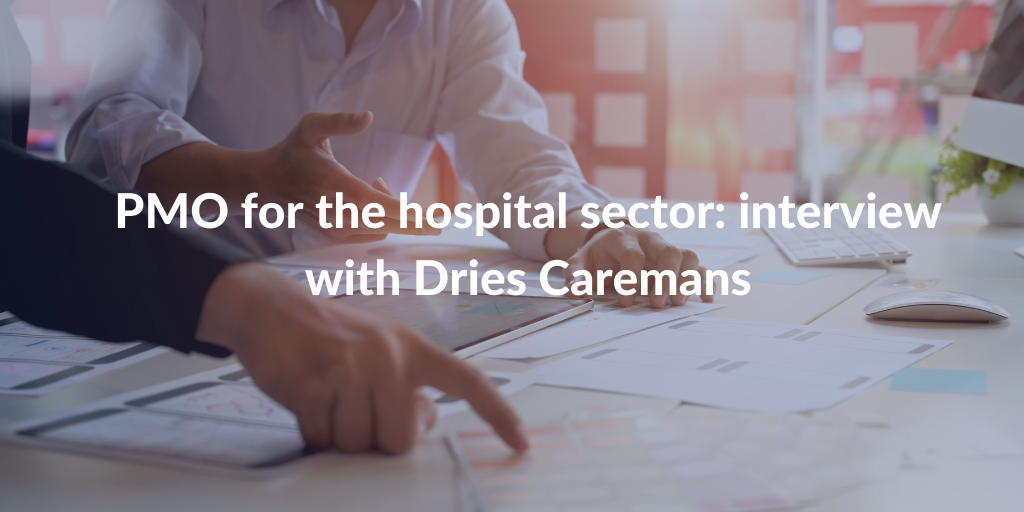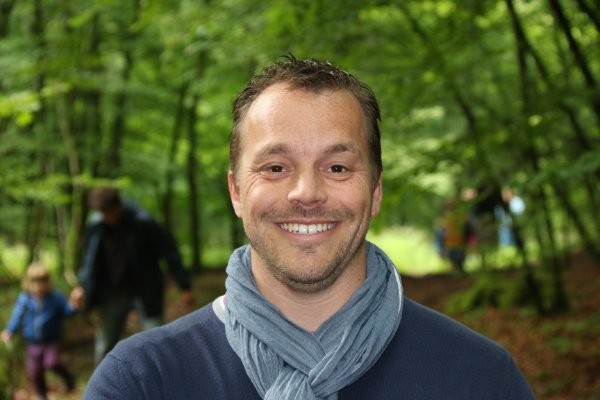What is your current job title and what is the nature of your job?
I work as a staff member of our PMO (Project Management Office) in the AZ (Algemeen Ziekenhuis, General Hospital in English) called Klina in Brasschaat, Belgium. There are 581 beds. The role of the PMO has been introduced to our hospital in February 2020. As it is still a relatively new department and I am currently the only one, I am very flexible to determine the content of the role in close consultation with the management. Every month, I report to the strategic management committee on the progress of current projects and ensure a uniform project operation within AZ Klina.
At the moment, we are going through a transition in the AZ Klina. We are reorganizing the quality and the workforce within the PMO. I am leading the set-up of a PMO cell where we will have 5 FTE (Full-time Equivalent) project leaders and employees. From January 2022 the PMO cell will be fully operational.
How did you arrive at your current position?
I am a nurse by education and have worked for several years in the AZ Klina intensive care unit. After completing my Master’s degree in Nursing & Midwifery, I became a staff member/quality coordinator in our hospital. After a short ‘excursion’’ of 4 years at another hospital (ZNA) in the role of project manager, I returned to AZ Klina 2 years ago with the request of setting up a PMO cell.
Can you describe the role of the PMO within the hospital?
Because having a clear overview of the current situation in the hospital is key, I started my role as PMO by talking to each of our board members individually. We tried to map the projects that were running in their departments and to describe their status, timing and governance (sponsor/project leader).
As a PMO, I want to make project work more professional and create an overview of what we do within the organisation in a structured manner. Our intention is to keep the project techniques used very accessible and low-key so everyone can work with these tools. Together with the project sponsor, I examine to what extent large strategic projects can be split or merged into logical sub-projects, and thus engage in portfolio/project management.
Every week, the PMO cell meets with the project leaders & employees to discuss their projects. This meeting results in a monthly report that I give to the strategic management committee. Here, progress is discussed, possible actions/adjustments are decided upon and new ‘projects in progress’ are assigned. The strategic management committee determines whether support from the PMO cell is needed or not, and who will be involved (project leader or project assistant).
What are the benefits of having a PMO?
- Project management has become an important topic within AZ Klina: we discuss and think about optimization
- Projects are approached in an increasingly structured/standardised way: there is regular feedback to the project group members, sponsors and board members
- Project progress is being followed- up at all times: thanks to the PMO, we have built a dashboard so that we can follow the progress of a project and estimate the available capacity
Can you think of any differences in PMO between the hospital and other sectors?
- The hospital sector is atypical: the interaction between the hospital and the doctors is different as the doctors are often independent. This makes a directive approach difficult, so we try to focus more on finding compromises.
- A hospital is not purely financially driven: in terms of budget there are large differences between the hospital and other sectors.
- Similar project-based approach to change among the hospital and other sectors: I am convinced that a standardised approach to projects adds value when it comes to setting up a PMO.
What are the challenges you face? How can you overcome them?
First of all; PMO is quickly perceived as a threat because it creates transparency in project operations and periodic reporting is done at board level. From a PMO perspective, it is important to know the culture of your organisation well and to assess the underlying sensitivities. In AZ Klina we deliberately chose to start PMO gradually, and to first make an overview of the projects and their current status. In this way we allowed the trust in the PMO function slowly starting to grow, even though it is still fragile.
Secondly, there are often several interests in the execution of a project. It is an art as PMO to know these interests and to take them into account as much as possible. By working in a clear and structured way, every person involved can see the whole picture and you avoid different interpretations/assumptions.
Lastly, I think people have a natural tendency to procrastinate. As a PMO, it is a constant struggle to get things done by the agreed deadline. This remains a challenge for myself as well, the proof lies in me forwarding the answers of this interview last-minute.
How do you measure progress?
Our ICT department is currently working on a new, more detailed reporting tool. Until now, this is done in Excel and there is no real measurement linked to it. The PMO cell is still in full development and the focus is first on mapping projects and a PMO dashboard with ‘basic’ information. As soon as the reporting tool is finished, we will be able to extract reports for the number of completed/abandoned projects.
How did the global pandemic, which obviously influenced the hospital sector, influence your daily work? How was this handled up to today?
Given my nursing background, I was involved in organising extra intensive care bed capacity in the operating and recovery rooms, as well as setting up the vaccination centre in the military area of Brasschaat in collaboration with five local authorities, and a test point for employees.
After the first wave, 8 working groups were established to organise a restart of the hospital activity. For example, increasing doctor consultations may have an impact on certain medical examinations. We also had to take into account that these patients were checked for their temperature and that mouth masks were obliged at the entrance. So the communication department had to communicate this in time through various channels. Operations were rescheduled and an influx of urgent interventions followed, which in turn had a major impact on the number of beds and staff available. Of course, everything had to be done under strict safety conditions because an increase of internal Covid cases had to be avoided at all times. As the PMO I set up a Trello board in which all the advisory questions, decision needs, etc. were centralized so that daily feedback to the crisis cell was possible and things could be scaled up quickly.
I am still a member of the hospital’s standing committee (crisis cell), which meets three times a week. In my role as PMO I was able to give structure to this meeting; we developed a template in which the working group on personnel indicates for each department what the actual bed occupancy is in relation to the available staff.
It is clear that projects have a lower priority at the moment, but as PMO we still want to do everything we can to ensure that developments do not come to a halt. At the PMO, we are able to quickly free up agendas and tackle ad hoc problems in a structured manner. In a pandemic of this magnitude, this structured approach provides peace and clarity.
If you are interested to learn more about this topic, you can also read our article Healthcare Project Management: challenges and benefits.









